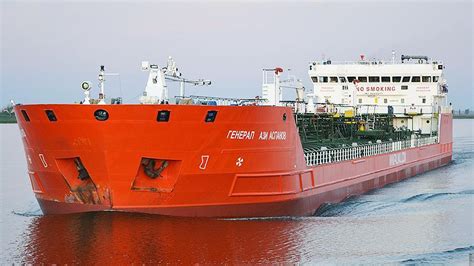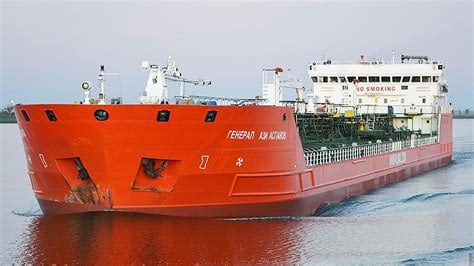
Biden and the European allies are putting on a brave face and claiming they’re really socking it to Russia, but this celebration is likely to be short-lived. The recent actions by Biden are likely to set in motion disruptions in the international financial system that could end America’s status as the World’s reserve currency. Let’s start with the SWIFT sanctions.
SWIFT is the acronym for Society for Worldwide Interbank Financial Telecommunication. SWIFT is basically a message system for banks that allows them to communicate key financial information required to pay invoices or wire money from one entity to another. So the big brave West cut off some Russian banks access to SWIFT. That means people wanting to buy Russian exports will not be able to pay for them in dollars. EXCEPT, the SWIFT sanctions were not imposed on those Russian banks that receive payments from the United States and Europe for oil. Got that? It is a sham sanction.
But SWIFT is not the only game in town. There are alternatives:
- CIPS – sponsored by China, for trade-related deals in the Chinese currency with Chinese clearing banks[57]
- SFMS – sponsored by India
- SPFS – sponsored by Russia, mostly composed of Russian banks
CIPS in particular represents a direct threat to SWIFT dominance. A recent discussion at MarketPlace between David Brancaccio and Jennifer Pak is illuminating:
David Brancaccio: So, an alternative for Russia could be China’s cross-border interbank payment system, acronym CIPS. How’s it work?
Jennifer Pak: China’s CIPS connects participants inside China and out to do trade or investment and then settle those transactions using Chinese yuan.
Brancaccio: Well, How’s it different from the SWIFT global payment system based in Belgium?
Pak: Right. So let’s say I sell you shoes. Normally, you’d reach for PayPal to settle it in U.S. dollars, right? But instead, you could use CIPS and pay me in Chinese yuan. And it actually relies heavily on SWIFT’s financial messaging services. So you can think of CIPS as being enhanced by SWIFT rather than working against it.
Brancaccio: But in the Chinese currency, that’s key. What kinds of institutions currently use the CIPS system?
Pak: Well, CIPS says they have roughly 1,100 financial institutions from 100 countries, but they’re mostly from China, and also ones from Russia.
Many analysts believe CIPS is still a pipe dream. I do not. I think the West has underestimated the seriousness of this threat. Consider this fact–of the top ten banks in the world, the top four are all based in China (the following data is from January 2021).
- Revenue (TTM): $123.6B
- Net Income (TTM): $45.3B
- Market Cap: $231.8B
- 1-Year Trailing Total Return: -6.9%
- Exchange: OTC
The largest bank in the world in terms of total assets under management (AUM) is the Industrial and Commercial Bank Of China Ltd. This institution provides credit cards and loans, financing for businesses, and money management services for companies and high net worth individuals. Though this is a commercial bank, it is state-owned.
- Revenue (TTM): $102.2B
- Net Income (TTM): $38.7B
- Market Cap: $196.6B
- 1-Year Trailing Total Return: -3.7%
- Exchange: OTC
The second Chinese bank on our 10 biggest list is China Construction Bank Corp. It provides corporate banking services such as e-banking, credit lines, and commercial loans. China Construction Bank also provides personal banking through a separate segment, offering personal loans, deposits, wealth management, and credit cards.
- Revenue (TTM): $89.7B
- Net Income (TTM): $30.9B
- Market Cap: $131.5B
- 1-Year Trailing Total Return: -14.1%
- Exchange: OTC
Agricultural Bank of China is state-owned institution that provides not only personal and corporate banking services, but it also offers a special suite of products for agricultural customers such as small farming operations and larger agricultural wholesale companies.
- Revenue (TTM): $79.4B
- Net Income (TTM): $27.2B
- Market Cap: $109.1B
- 1-Year Trailing Total Return: -12.7%
- Exchange: OTC
Bank Of China focuses primarily on commercial banking activities such as deposits and withdrawals, and foreign exchange. The bank also is even licensed to issue banknotes in Hong Kong and Macau.
These banks are likely to forge a closer relationship with Russia than already exists. Russia may not be a huge market but it provides some critical commodities. The United States is buying 7% of its oil from Russia. Europe is purchasing an even larger chunk.
Then there is refined nickel. Russia is not the largest producer of nickel in the world (that honor lies with Indonesia) but it is the largest producer of refined nickel. This is a critical component in stainless steel and batteries. In addition, Russia and Belarus are major producers of potash–an essential commodity needed to produce fertilizer. A reduction in potash exports means less fertilizer for American farmers come September.
According to Tyler Durden at Zerohedge, an enormous spike in the price of oil looms on the near horizon:
This self-imposed embargo which has effectively halted a majority of Russian oil shipments, threatens to drive up energy prices globally by removing a gusher of oil from a market that was tight even before the Russian invasion of Ukraine. Meanwhile, Russia, waging war and in need of revenue with its financial system in turmoil, is taking extreme steps to convince companies to buy its most precious commodity. . . .
“The market is starting to fail,” a trader at a major commodities trading house told the WSJ, which is a problem because with Russia exporting roughly 5 mmb/d, the oil market – already extremely tight – could find itself in a historic supply shortage in just a few days, and will need massive demand destruction, read much, much higher oil prices, to stabilize as Goldman wrote over the weekend. . . .
As a result of these sanctions, and fears that a full-blown embargo on Russian oil output will soon follow, energy buyers have balked at the prospect of using the existing “loophole” worried that in just a few days they may be stuck with billions in Russian oil they can’t sell. As a result the entire Russian oil supply chain is collapsing.
Which is not to say there are no buyers left: as prices for Russian crude tanked last week, companies in India vacuumed up around seven million barrels of Urals oil, but even there companies are taking steps to limit sanctions risk according to the WSJ.
I do not anticipate that Russia will collapse in a heap and wail about the unfair bullying of the West. They are likely to use cutouts and work arounds but will start shedding dollars and acquire more Chinese Yuans. It appears that Vladimir Putin was anticipating the possibility of sanctions in light of the agreements he signed with China in early February:
Russia forged new long-term supply deals with China as the Kremlin aims to strengthen ties with the Asian nation amid souring relations with the West.
Energy giants Gazprom PJSC and Rosneft PJSC signed agreements with the world’s largest energy consumer as President Vladimir Putin met his Chinese counterpart Xi Jinping in Beijing ahead of the Winter Olympics.
Gazprom signed its second long-term gas deal with China National Petroleum Corp. Under the agreement, the producer will deliver 10 billion cubic meters per year over 25 years via a new pipeline from Russia’s Far East.
Rosneft reached an agreement to deliver 100 million tons of crude oil to CNPC via Kazakhstan within 10 years, following the expiration of a similar contract next year. The volumes will be used as feedstock for refineries in China’s north-west, Rosneft said in a statement.
Biden’s policy towards Russia has succeeded in solidifying ties between Russia and China that puts the United States at a clear disadvantage. The shaking in the financial markets is just beginning. This is likely to produce the worst of both worlds–global stagflation and inflation. American consumers are likely to pay a terrible price.


